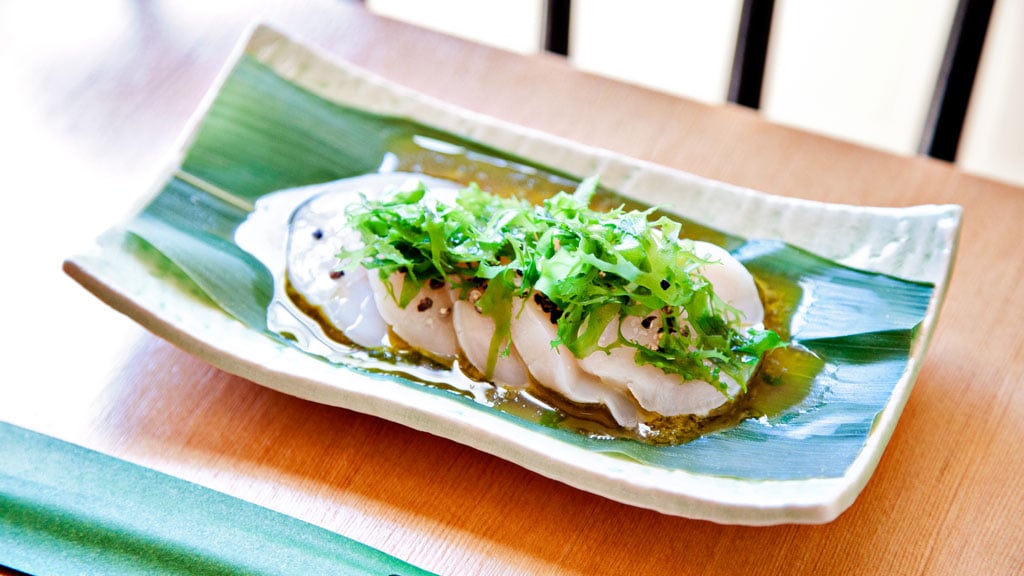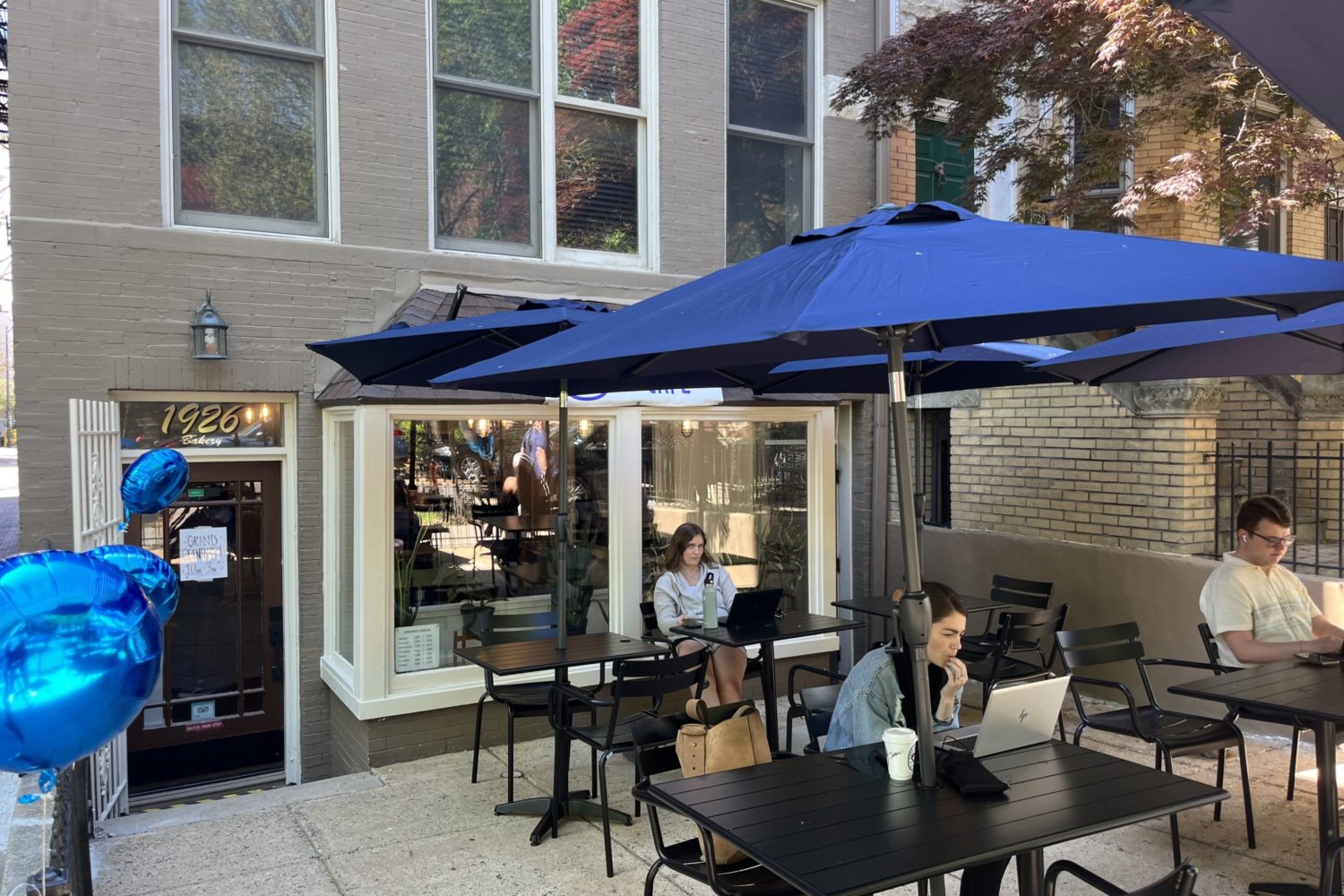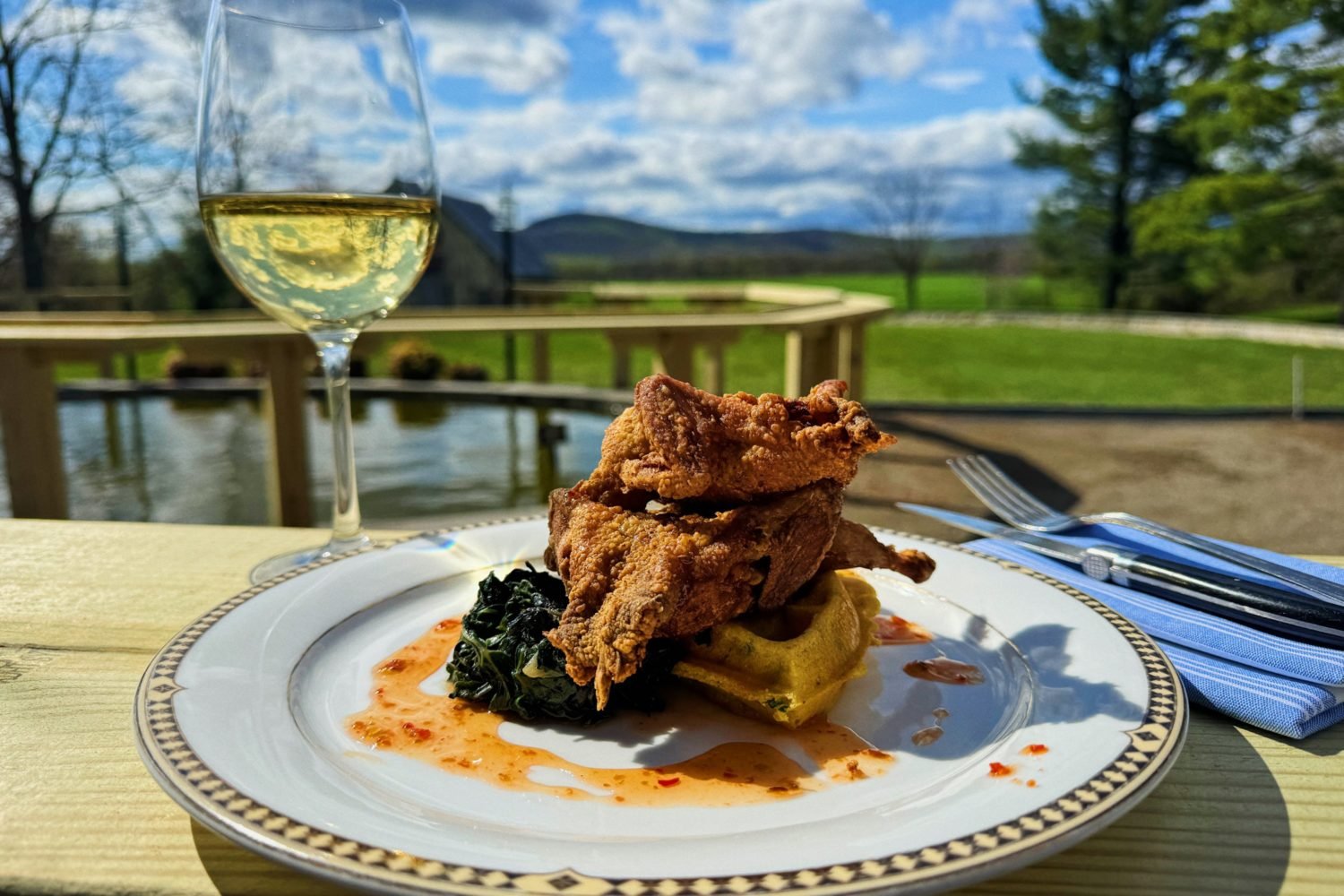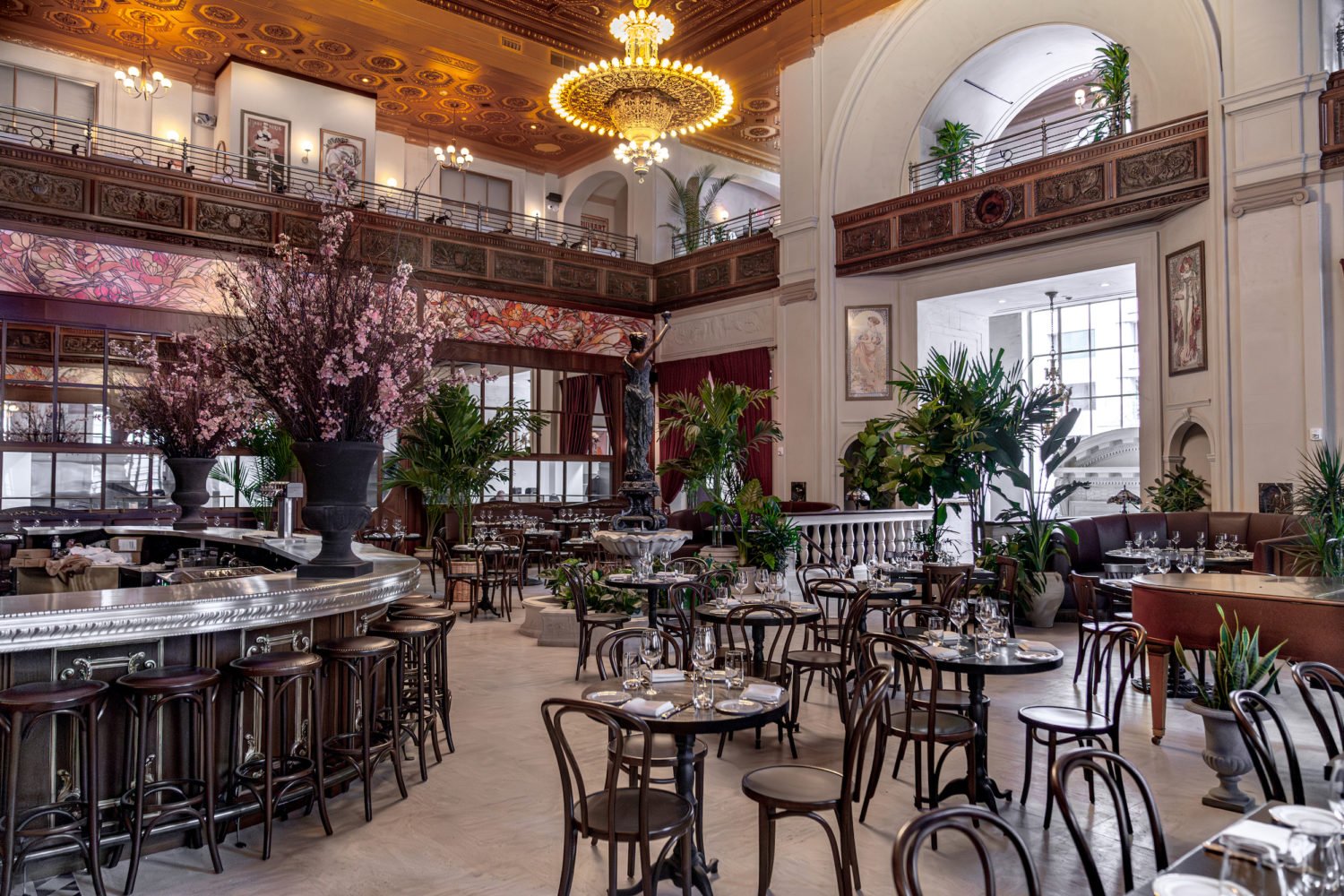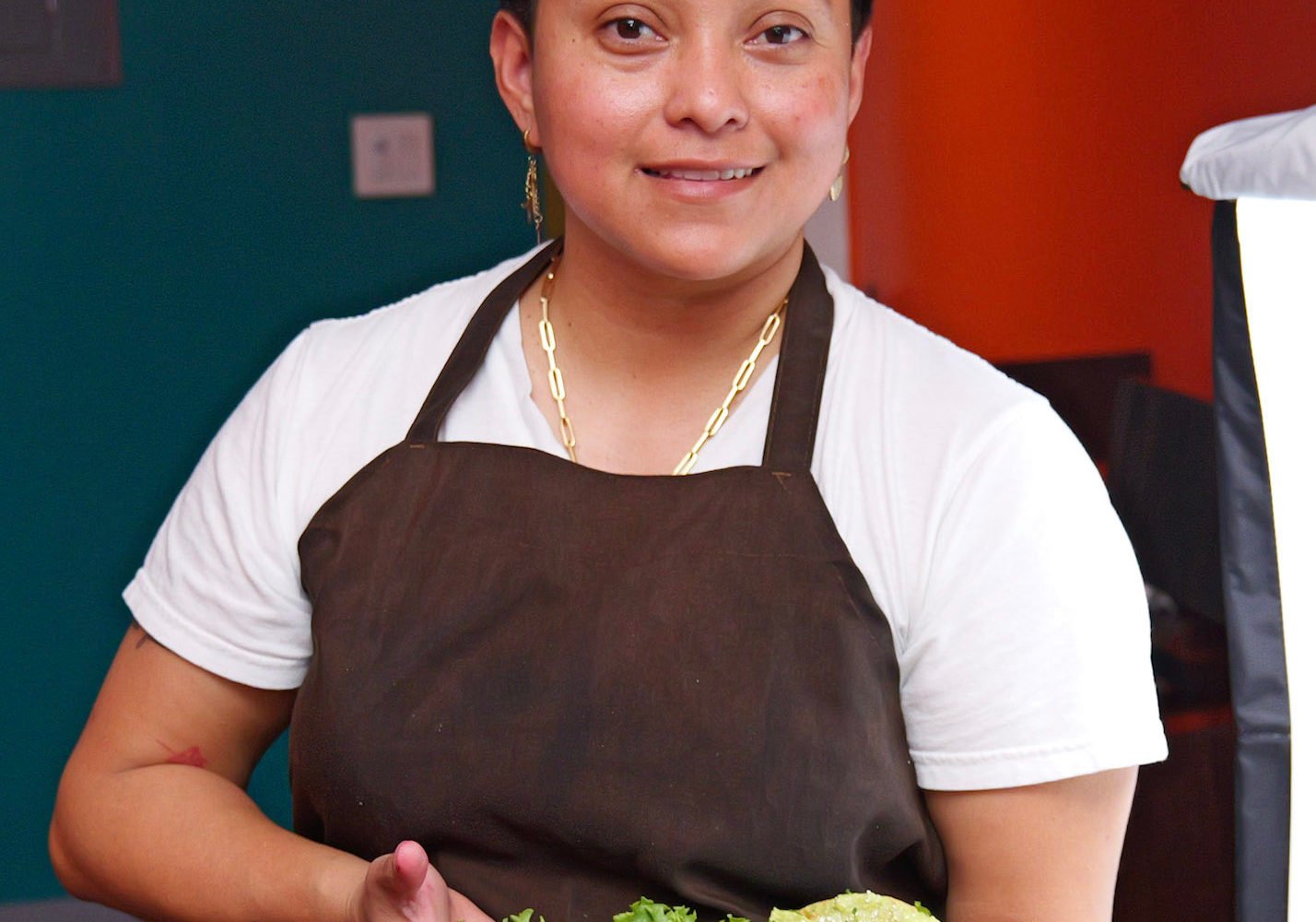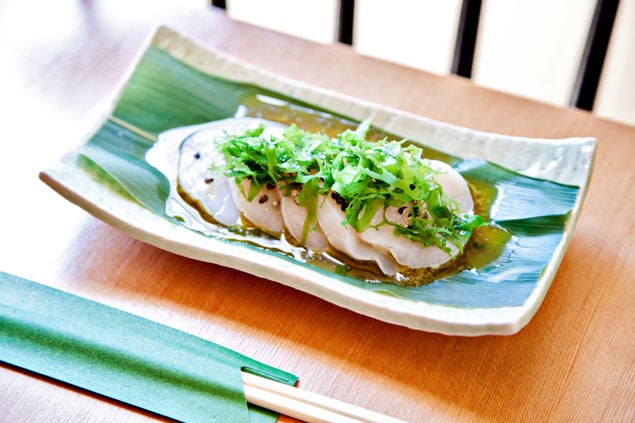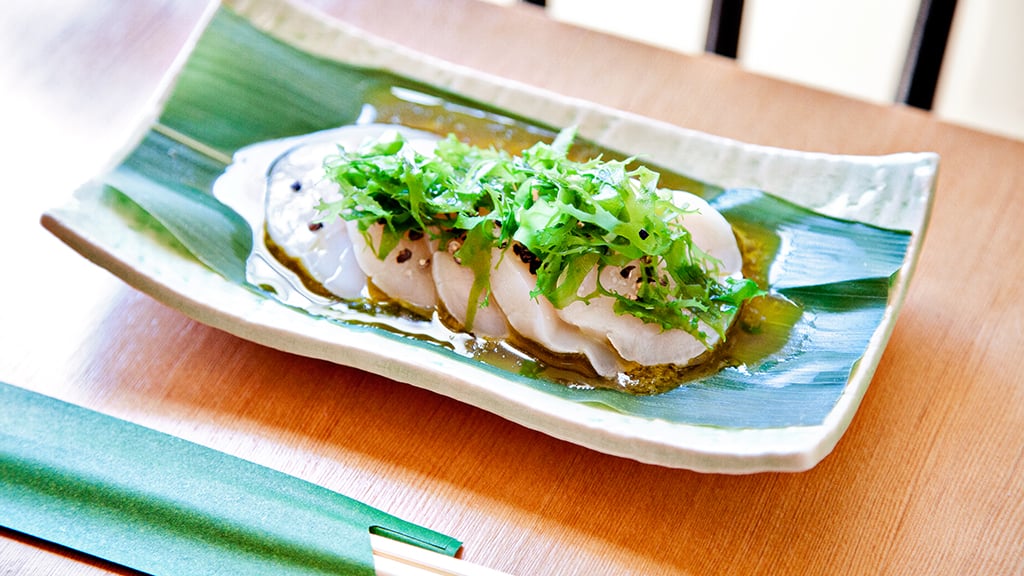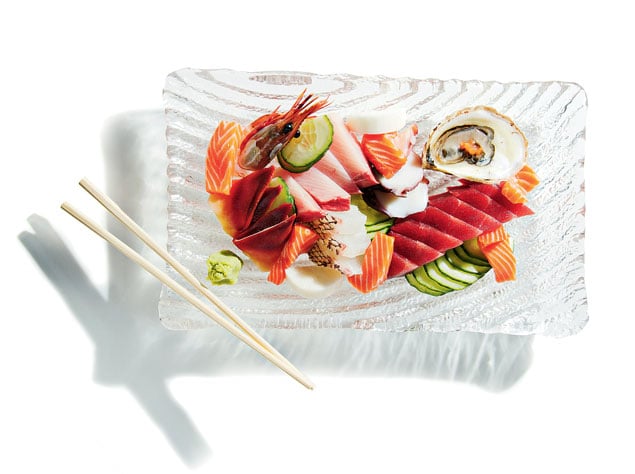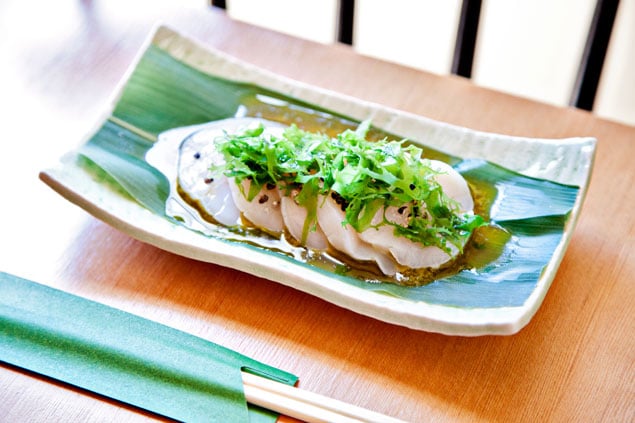About Izakaya Seki
Among the most intriguing manifestations of the downscaled dining ethos in our recessionary age is the micro-niche restaurant, which serves up a special-interest meal with all the frills of a food truck. Earlier this year, Michael Landrum opened Nice ’n’ Greasy Steak ’n’ Cheesy—an entire restaurant devoted, in effect, to a single sandwich. The increasingly crowded genre includes lobster-roll restaurants (Luke’s Lobster in Penn Quarter, Georgetown, and Bethesda), an Istanbul-style fish-sandwich shop (Fishnet in College Park), and a restaurant where the only dinner is steak, fries, and salad (Medium Rare in DC’s Cleveland Park).
No place, however, speaks to the possibilities of the micro-niche quite like the new Izakaya Seki, which turns what might have been gimmicky into something expansive and even thrilling. Housed in a former barbershop on a residential DC side street just north of 14th and U streets, Northwest, and operated by a father and daughter, Hiroshi and Cizuka Seki, the restaurant bids to provide the Japanese equivalent of nose-to-tail dining, in which the obscure items that elsewhere make up an exotic sidebar for thrill seekers become the main event.
Hiroshi, the father, is the chef, and his presence imposes itself on the bare-bones, two-level space with a quiet authority. There’s no screaming of “Irrashaimase!” as you walk through the door, and
the open galley kitchen approximates the calm orderliness of a surgical station. When Seki isn’t pleased with one of his three cooks, he simply walks over and demonstrates the proper technique—I watched in awe one night as, with a few flicks of the wrist, he sent what looked like a frittata flying high in the air above the stove. (It was a pan of fried rice.) Another night I half expected Seki to slice off his fingers while sabering the top of a quail egg with a long chef’s knife. (The yolk provided the sauce for a pristine presentation of raw sea urchin.)
The quiet upstairs dining room is pleasant and relaxing, but you want to be downstairs, perched on a stool at the counter (there’s no ground-floor dining room). The immediacy and intimacy are treats as rare as the fresh baby octopus Seki sometimes serves, a reminder that a restaurant need not be a lavish, overproduced show to excite.
The word izakaya typically connotes pub grub, but that has to be put into the context of a Japanese culture that worships precision—there’s often a level of detail and a cleanness of execution
you’d never find, say, in an American sports bar. As a result, izakayas are almost always a good value and a good time. Seki is something more—a place so brilliantly realized it transcends its original
purpose. You can drop in after work for a few plates and a glass of cold sake (the selection is extensive and well annotated with plus-and-minus scoring for picking a bottle that has the sweetness or dryness you prefer), but you can regard it as a special night out, too, a place to appreciate the bold minimalism of a master working in a minor key.
Chef Seki claims a half century of experience—or, to put it another way, he has been carving fish since he was in his early teens. His most recent tour of duty was in St. Louis, where for more than two decades he commanded the city’s best sushi restaurant. He came east because he wanted to be near his daughter but also because he yearned to cook the sort of arcana—beef tongue, pig trotters, pickled mackerel—that his audience of Midwesterners apparently found it difficult to abide.
There’s exceptional yellowtail, presented in thick, buttery shingles, and the mackerel is richer than I’ve eaten in years, but it’s the cooked, not the raw, that gives the place its identity—and, in a city
where Japanese food mostly means sushi, much of its excitement.
The broiled cuts of mero—otherwise known as Chilean sea bass—and the broiled, salted yellowtail jaw are as good as heat-treated fish gets, with a sweet succulence and a delicacy of taste that make each bite feel like a discovery. (In this context, an ammoniated skate wing amounted to a crushing disappointment.) The meats are less exciting, but I enjoyed the skewered chicken meatballs, and the grilled short ribs—sliced thin and glazed with kalbi marinade—offered some of the visceral pleasures of a marinated steak cooked over an open flame.
There’s fried stuff, too—vegetable tempuras and fritters of shrimp, carrots, and onions, all cooked to an immaculate crisp. (Whole fried mackerel doused in an escabeche, a pickling mixture, and
served cold is not for the faint of stomach.) The one ringer, chilled soba noodles that come from a package, are nonetheless soothing and satisfying. The cold dishes, mostly salads, don’t sound that enticing, but it’s a measure of Seki’s mastery that he can turn a collection of unsexy ingredients—burdock root, carrots, and chilies, say—into something mysteriously delicious.
There’s no getting around the esoteric quality of many of these dishes. But there’s no getting around their homeyness, either. Most consist of a meat or fish and a sauce. They sing because of the exactitude of their construction: high-quality ingredients accentuated or reinforced in just the right way.
This is a meal to eat slowly, savoring the tiny explosions of flavor. I noticed each time I was there that conversation petered out or stopped abruptly as people dug in. In our high-anxiety world, we could all use a little more slowing down, a little more savoring. And a lot more places like Seki.
This article appears in the November 2012 issue of The Washingtonian.

